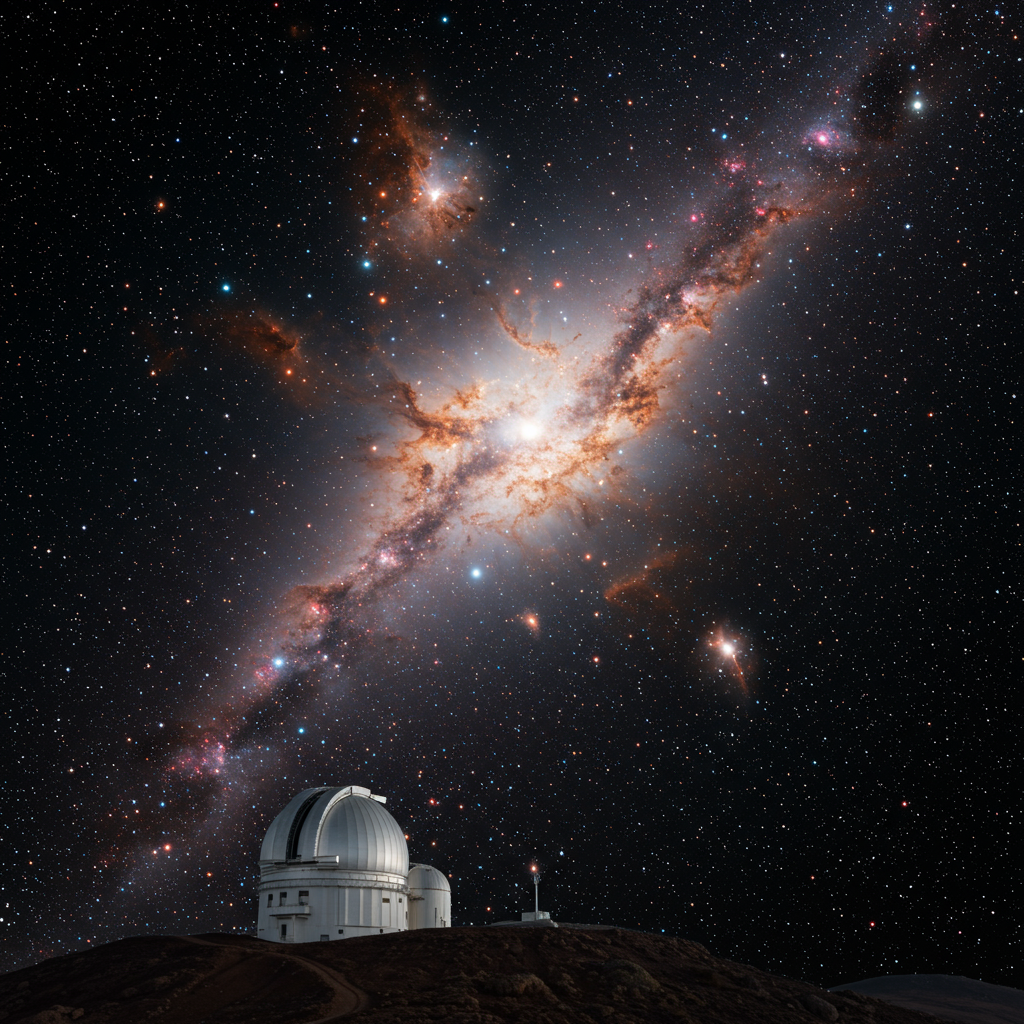A mysterious radio burst recently detected from space had scientists initially excited, then puzzled, before revealing an even stranger truth. What first appeared to be a signal from the deep cosmos was traced back to something far closer to home: a NASA satellite launched in the 1960s that has been defunct for nearly 60 years. This baffling event highlights the unpredictable nature of objects orbiting Earth and the challenges faced by astronomers trying to listen to the universe.
The Hunt for Cosmic Signals
Astronomers use powerful radio telescopes like the Australian Square Kilometre Array Pathfinder (ASKAP) to detect faint radio waves from distant celestial objects. These signals offer crucial insights into phenomena invisible in visible light, such as energy from black holes or the enigmatic fast radio bursts (FRBs) that originate in other galaxies. Identifying the source and nature of these fleeting cosmic signals is a core goal of modern radio astronomy.
An Unexpected Detection
In June 2024, researchers using the ASKAP telescope picked up an extraordinary radio burst. Its intensity was notable, but its characteristics were highly unusual. Unlike typical FRBs, which last for milliseconds, this burst was incredibly short, clocking in at less than 30 nanoseconds. The image captured by the telescope was also unexpectedly fuzzy, a trait that hinted at a source much closer than a distant galaxy.
Pinpointing the Source
The peculiar nature of the signal spurred further investigation. Scientists meticulously triangulated the source’s precise location. This process involved comparing the signal’s timing and intensity across different parts of the telescope array. The data consistently pointed to an origin point remarkably close to Earth.
This finding shifted the focus from deep space to Earth orbit. Researchers began cross-referencing the calculated position with databases of known satellite trajectories. The search yielded a striking match: NASA’s Relay 2 satellite.
The Mystery of the “Zombie Satellite”
Relay 2 was a pioneering communications satellite. It was launched by NASA in 1964 as part of early experiments in global communication technology. While successful in its time, its operational life was short-lived. Its transponders failed in June 1967, rendering the satellite inoperative. For the past 58 years, Relay 2 has merely been another piece of space debris, silently orbiting Earth at altitudes between 2091 km and 7411 km.
The realization that the signal came from Relay 2 presented a new, even more perplexing mystery. How could a satellite that had been non-functional for nearly six decades suddenly emit a radio burst? The signal was not only unexpected but also incredibly short (30 nanoseconds), a characteristic its original, 1960s-era equipment was certainly not designed to produce. This earned Relay 2 the informal title of a “zombie satellite,” seemingly signaling from beyond its operational grave.
Theories Behind the Unexpected Burst
Scientists are currently exploring two primary hypotheses to explain Relay 2’s sudden, brief transmission. Neither theory has been definitively proven, highlighting how much remains unknown about the space environment, even close to home.
Electrostatic Discharge (ESD)
One leading theory proposes that the signal was caused by an electrostatic discharge. As satellites orbit, they can accumulate electrical charge by passing through regions of ionized gas or plasma in Earth’s upper atmosphere. If this charge builds up sufficiently, it can suddenly discharge, similar to a static electricity spark. Such a discharge could emit radio waves.
While ESD is a known phenomenon that can affect spacecraft, generating a radio burst as short as 30 nanoseconds is highly unusual for typical discharges. If confirmed, however, detecting such events could have practical benefits. ESDs are known to potentially damage operational satellites, and the ability to detect them through radio bursts could offer valuable insights into preventing satellite failures.
Micrometeorite Impact
An alternative explanation suggests the burst resulted from an impact with a micrometeorite. Space is full of tiny particles, often no bigger than a grain of sand, traveling at extremely high velocities. A micrometeorite weighing just a few micrograms but moving at tens of thousands of miles per hour (around 44,000 mph) could strike the satellite’s surface.
Such a high-speed collision would instantly create a small cloud of superheated, charged plasma. This plasma cloud would then emit a burst of radio waves detectable by sensitive instruments like ASKAP. This theory provides a plausible mechanism for a sudden, brief energy release.
The Broader Context: Satellite Interference
This strange incident also underscores a growing challenge for ground-based radio astronomy. While scientists look for signals from the cosmos, the space around Earth is becoming increasingly crowded with human-made satellites. Large constellations like SpaceX’s Starlink pose a significant threat by emitting unintended electromagnetic radiation (UEMR). This “leakage” of radio waves can be far brighter than faint cosmic signals, effectively blinding telescopes to parts of the universe.
Experts note that UEMR from newer satellites can be millions of times brighter than the faintest objects astronomers study. This makes distinguishing weak cosmic signals from human-made noise increasingly difficult and time-consuming. The Relay 2 incident, while from a single, old satellite, serves as a reminder that any radio signal originating from Earth orbit must be carefully identified and understood to avoid misinterpreting it as a deep-space phenomenon or simply dismissing it amidst the growing interference landscape. The ability to precisely locate even unexpected signals from near-Earth objects is vital for preserving our ability to study the universe.
Significance of the Discovery
Regardless of the exact cause, the detection of a radio burst from Relay 2 holds significant value. It demonstrates the ability of advanced radio telescopes, typically used for studying distant galaxies, to detect and locate faint, short-lived events occurring relatively close to Earth. This application could prove useful for monitoring the increasingly complex near-Earth space environment.
Furthermore, understanding the mechanism behind this burst could improve our knowledge of phenomena like electrostatic discharges or micrometeorite impacts. These events can pose risks to the thousands of active satellites currently orbiting our planet, which provide essential services like communication, navigation, and weather monitoring. The Relay 2 signal is a peculiar space mystery that reminds us that even seemingly inert objects in orbit can behave in unexpected ways, pushing the boundaries of our understanding of space.
Frequently Asked Questions
What caused the radio signal from the dead satellite?
Scientists don’t know for certain what caused the signal from NASA’s defunct Relay 2 satellite. The two main theories propose either an electrostatic discharge (a sudden spark from accumulated static electricity) or an impact from a tiny, high-speed micrometeorite. Both events could potentially create a brief pulse of radio waves.
Which telescope detected this strange satellite signal?
The mysterious radio burst from the Relay 2 satellite was detected by the Australian Square Kilometre Array Pathfinder (ASKAP) radio telescope. This powerful instrument array is located in Western Australia and is typically used by astronomers to search for cosmic radio sources, including distant galaxies and fast radio bursts.
Why is a signal from a dead satellite important?
Detecting a signal from a satellite defunct for decades is important for several reasons. It highlights unexpected behaviors in the space environment and on orbiting objects. It also demonstrates the capability of modern radio telescopes to precisely locate even very short signals from near-Earth space, which is increasingly relevant due to satellite interference challenges. Furthermore, understanding the cause (like electrostatic discharge or micrometeorite impact) could offer insights into potential threats to operational satellites.




